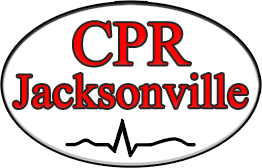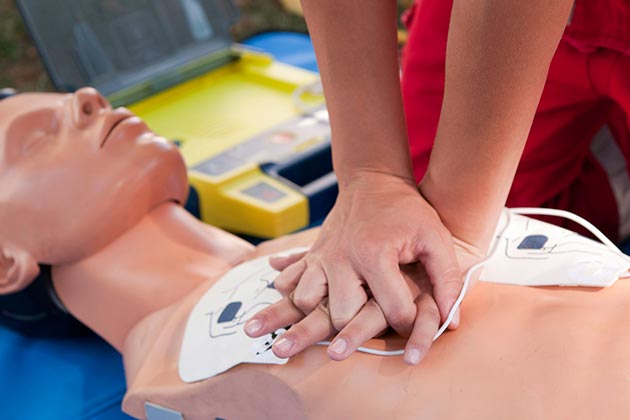The Life-or-Death Difference of Two Inches
When someone collapses in cardiac arrest, those next few moments matter more than most people realize. In fact, just two inches—up or down—can mean the difference between saving a life or missing the mark. While the importance of chest compressions in CPR is well-known, what often gets overlooked is how hand placement directly impacts the success of those compressions.
The Critical Foundation of CPR
CPR survival rates can more than double when high-quality technique is used, and proper hand placement is one of the most critical components of that technique. One notable example involved a bystander who recently revived a jogger by using CPR learned in a training class. The key difference? They remembered exactly where to place their hands. That detail helped deliver effective compressions until emergency responders arrived, ultimately saving the person’s life.
The Science Behind Proper Hand Placement
Hand placement in CPR isn’t just a minor technical detail—it’s the foundation of everything else that follows. Without correct positioning, compressions lose their effectiveness, reducing blood flow to the brain and heart. This article explores the science behind proper hand placement, outlines correct techniques, and shows how you can master this life-saving skill through training and practice.
Understanding Chest Anatomy
To understand why hand placement matters so much, it helps to look at the anatomy involved. The heart lies beneath the lower half of the sternum, slightly to the left of the chest’s midline. The rib cage protects it, but also creates challenges for CPR delivery. Effective compressions work best when delivered directly over the heart—on the sternum—without compressing soft tissues or the stomach area. The goal is to maximize pressure on the heart while minimizing injury to surrounding structures.
The Physics of Effective Compressions
There’s also physics at play. Effective CPR requires compressions of at least two inches (5 cm) in adults, delivered at a steady rhythm. If hands are placed too high on the chest, they may only compress the upper ribs, reducing the force that reaches the heart. If too low, compressions may press on the stomach or liver, potentially causing internal injuries while also limiting cardiac output. Off-center placement increases the risk of rib fractures and leads to uneven pressure distribution. Research confirms that accurate hand placement improves CPR effectiveness and increases the likelihood of Return of Spontaneous Circulation (ROSC).
Common Placement Mistakes and Their Consequences
So, how do you find the correct spot every time? The landmark method is the most commonly taught approach. Start by locating the point where the bottom of the ribcage meets in the center of the chest—the xiphoid process. From there, move your hands up to the center of the sternum, specifically its lower half. This is the optimal compression zone. You can also visualize it as the center of the chest between the nipples, slightly above the notch where the ribs meet.
Hand Placement for Different Populations
Once the location is identified, proper hand positioning is essential. Place the heel of one hand directly on the identified spot on the breastbone. Place your other hand on top, interlocking the fingers or lifting them to avoid pressing on the ribs. Keep your wrists straight and your shoulders directly above your hands. This positioning allows for maximum force with minimal fatigue, especially important during prolonged CPR efforts.
Advanced Hand Placement Techniques
Different populations may require slight modifications. For elderly patients with fragile bones, rescuers may need to adjust pressure while maintaining accurate hand placement to reduce the risk of fractures. In healthcare settings, advanced training helps providers recognize these nuances and respond appropriately.
Two-Person CPR Coordination
When two rescuers are involved, coordination becomes key. Both individuals must understand hand placement landmarks and maintain consistency when switching positions. Smooth transitions prevent gaps in compressions and ensure continued effectiveness. During formal training, teams often practice position changes to reduce interruption time and reinforce muscle memory.
Technology-Enhanced Training
Technology is helping refine these skills even further. CPR feedback devices, such as those found on high-quality manikins or integrated with defibrillators, give real-time guidance on hand placement, compression rate, and depth. Some systems alert rescuers if their hands drift or if compressions are too shallow. Using these tools during training builds confidence and helps students develop correct habits.
Adapting to Real-World Scenarios
Real-world scenarios aren’t always textbook perfect. You might have to perform CPR on a bed, uneven ground, or in cramped quarters. These conditions make hand placement more challenging. Clothing layers, body size, and patient positioning can also interfere with finding anatomical landmarks. Quick assessment and adaptability are essential skills that come with practice.
Training and Skill Maintenance
Hands-on training is the cornerstone of developing CPR competency. Muscle memory formed through repetition ensures that responders act instinctively in high-stress situations. Instructor-led courses provide immediate feedback, correcting hand placement errors before they become habits. High-fidelity simulations reinforce proper technique under pressure, building not just skill but confidence.
Certification Standards and Requirements
CPR certification requires demonstration of these skills according to the American Heart Association (AHA) guidelines. Participants must show accurate hand placement and consistent technique during practice scenarios. Recertification every two years ensures that these standards are upheld and skills remain sharp.
Continuing Education and Skill Updates
Continuing education is key to staying current with evolving guidelines. As research informs new techniques, staying engaged in professional development helps rescuers update their knowledge and adapt their skills. Many providers benefit from attending refresher courses annually, especially in high-volume or high-risk environments.
Building Confidence in Emergency Situations
Overcoming Performance Anxiety
When the pressure is on, even trained individuals can doubt their abilities. Performance anxiety is a common challenge. Fortunately, confidence grows with preparation. Visualization techniques, scenario practice, and mental rehearsal can reduce hesitation and improve performance when it matters most. Training that includes psychological preparedness helps rescuers maintain focus and act decisively.
Quick Assessment Skills
Rapid landmark identification is another skill that improves with experience. With enough practice, responders can locate the correct spot on the chest in seconds, even through clothing or in low-light conditions. In team situations, clear communication is essential. Saying aloud, “I’m placing hands on the lower half of the sternum,” helps coordinate actions and confirm accuracy with team members.
Team Communication
Consistent communication among team members during code improves overall performance. Whether switching roles or giving feedback, verbalizing each step ensures everyone is aligned. Establishing a shared language around hand placement can reduce errors and create a more efficient resuscitation process.
Conclusion
Mastering hand placement in CPR is more than a technical requirement—it’s a professional responsibility. Every responder trained in correct technique becomes a powerful link in the chain of survival. From bystanders to seasoned healthcare providers, the impact of proper training reaches far beyond the classroom. It creates communities better equipped to respond, improves survival rates, and supports a culture of preparedness.
Don’t leave life-saving skills to chance. Contact CPR Jacksonville FL, today to schedule your American Heart Association certified training. Our expert instructors and stress-free, hands-on approach ensure you’ll master proper hand placement and boost CPR outcomes. Call now or visit our website to secure your spot in our next BLS, ACLS, PALS, or CPR and First Aid class.



